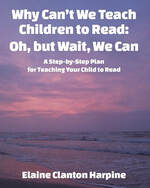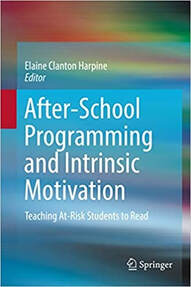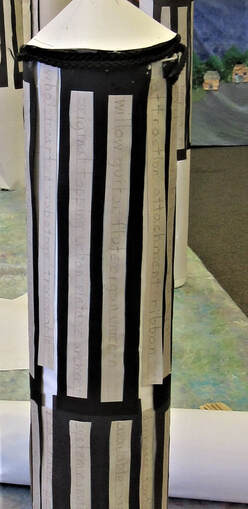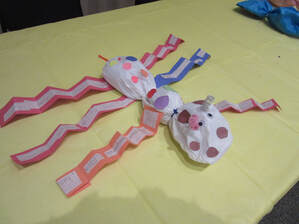 Intrinsic motivation is the key to an effective tutoring program.
Intrinsic motivation is the key to an effective tutoring program. Yes, I’m certain that intrinsic motivation is a more effective principle for teaching and learning than extrinsic motivation in the classroom and when tutoring. Extrinsic rewards and prizes will not teach children to read.
Let’s begin by looking at the Top 20 Principles for PreK through 12 Education, published by the Coalition for Psychology in Schools and Education of the American Psychological Association. I’m only citing Principle #9 at this time, even though I hope you will take the time to read all 20 principles. These principles for effective teaching and learning work in the classroom and with one-on-one tutoring. I like this explanation because it explains so clearly why intrinsic is better than extrinsic.
“Intrinsic motivation refers to engaging in an activity for its own sake. To be intrinsically motivated means to feel both competent and autonomous (e.g., “I can do it for myself”). Students who are intrinsically motivated work on tasks because they find them enjoyable. In other words, participation is its own reward and is not contingent on tangible rewards such as praise, grades, or other external factors. In contrast, students who are extrinsically motivated engage in learning tasks as a means to an end, such as to get a good grade, to get praise from their parents, or to avoid punishment.”
The Coalition continues:
“These benefits occur because students who are intrinsically motivated are more likely to approach their tasks in ways that enhance learning, such as attending more closely to instruction, organizing new information effectively, and relating it to what they already know. They also feel more self-efficacious and are not burdened by achievement anxiety. On the other hand, students who are more extrinsically motivated may be so focused on the reward (e.g., getting a high grade) that learning is superficial (e.g., the student may resort to shortcuts such as skimming the reading for specific terms rather than absorbing the entire lesson), or they may become discouraged if the pressures are too high. Furthermore, externally motivated students may disengage once the external rewards are no longer provided, whereas intrinsically motivated students show more long-lived mastery of learning goals.” (page 16)
In schools, after-school programs, and even in one-on-one tutoring, motivation all too often takes the form of extrinsic rewards, prizes, or even food. Such extrinsic rewards have been proven to be ineffective. Edward Deci and Richard Ryan, two excellent researchers, have been studying and testing the effects of intrinsic and extrinsic motivation in the classroom for over 30 years. From their research, they concluded that intrinsic was superior to extrinsic.
I’m a motivational psychologist. All of my reading programs only use intrinsic motivation, that is, internal motivation, motivation that comes from within. The children read because they want to read, not to obtain a prize or reward. When tutoring, I want to kindle in each student a desire to read and enjoy reading. I use hands-on projects to help generate intrinsic motivation.
_________________
See: Tutoring Hint #7: Intrinsic Motivation Is Better than Extrinsic Rewards
_________________
It is not possible for a teacher, parent, or tutor to motivate a student, but you can create a motivating environment. Tutoring is perfect for creating an intrinsically motivating environment.
In each chapter in my new tutoring program (Why Can’t We Teach Children to Read?—pictured at the top of the page), students practice vowel clustering by reading, decoding, encoding, and working with the words introduced that day. With the vowel boards used in the book, children and teens can see and hear the vowel sounds. Hands-on learning techniques increase intrinsic motivation and individualize instruction. Individualized instruction is essential for intrinsic motivation.
Students learn a different vowel cluster each day. To increase intrinsic motivation, the students use the words they are learning and place these words on puppets, rockets, and a variety of other hands-on projects. Completing a project helps struggling students learn organizational skills and learn to read and follow directions. The students work hard to complete their projects, but learning can also be fun.
These hands-on projects become teaching tools and are also motivational tools to encourage students to want to learn. They are not simply arts and crafts projects; they are a teaching technique building the student’s confidence and reading skills. I want to undo the harms of reading failure. I want to encourage children to try again and believe that they can learn to read. Intrinsic motivation works hand-in-hand with vowel clustering because students must have skills if they are going to believe that they can read and then build an internal desire to read.
So, yes, you want to use intrinsic motivation with your tutoring program.
If you have more questions about using intrinsic motivation when tutoring, please contact me. I’m always happy to help.






 RSS Feed
RSS Feed
